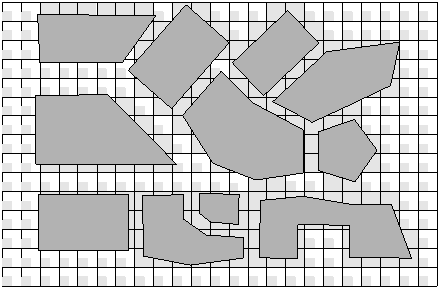Standard 3D Ray Tracing (SRT)
This model performs a rigorous 3D ray-tracing prediction which results in very high accuracy, but computation time is increased.
Due to the determination of the individual paths, the computational effort is very large. Therefore several acceleration techniques both with and without loss of accuracy are developed and integrated into this rigorous 3D approach.
Some sources of literature are available about the ray-tracing technique, for example, Glassner1, or Wolfle2. Therefore the details of the implementation of the standard ray-tracing model in WinProp is not covered in this document.
Neighbor Pixels
Investigations have shown that there is a high probability that two adjacent pixels have the same ray paths. The prediction can be accelerated if the ray paths of the neighboring pixels are known. Therefore, if this option is enabled, at first only every second pixel is computed. Then the ray paths of the remaining pixels are computed with the same path classes as for the neighboring pixels. The prediction error remains marginal while the acceleration factor is in the range of two.
Reduced Resolution
To accelerate the process of ray pathfinding, it is possible to determine in a first step the coverage (received power or field strength) of a considered area with a reduced resolution, thus for a grid of pixels where, for example, every second pixel is calculated. After this, the prediction values for the remaining pixels can be determined by spatial filtering (averaging) over the predicted grid. To reduce the loss of accuracy, it is important that pixels which are close to buildings calculated in the first step because of the expected changes by shadowing. In contrary to this there are no problems when using this algorithm for open areas. This approach leads to an acceleration factor about two if every second pixel is calculated in the first step (see Figure 1).
